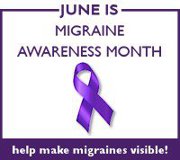National Migraine Awareness Month Blog Challenge, Day 9: “Daydream Believer.” Describe your dream day — without a migraine to hold you back.
Describing an ideal migraine-free day is empowering for many people, bolstering their hope and motivation. For me it is distressing, as it threatens the acceptance of my illness that I’ve fought so hard for. Part of accepting that I have chronic migraine and chronic daily headache has been understanding that I may never again have a headache-free moment. I do not strive to be pain-free, but to live as well as possible given my circumstances. This doesn’t mean I’ve given up my search for relief — I will be overjoyed if treatments ultimately result in the cessation of my headaches and migraines — but that I can be happy even though I have migraine and chronic daily headache.
I try to make each day as perfect as possible. If a migraine attack dominates the day, “perfect” may be getting settled on the couch with a good book. On other days, I seek to do what I need or want to do in the time I feel well enough to do so. If I waited to be migraine-free to enjoy my ideal day, I would stew in resentment until it arrived. I try to make every day, however mundane, as daydream-worthy as possible. That’s one of the beautiful, torturous lessons of chronic illness.
National Migraine Awareness Month is initiated by the National Headache Foundation. The Blogger’s Challenge is initiated by Fighting Headache Disorders.

